Zhiding Yu
M$^2$BEV: Multi-Camera Joint 3D Detection and Segmentation with Unified Birds-Eye View Representation
Apr 19, 2022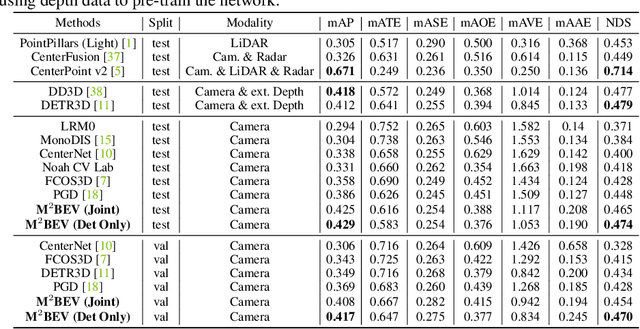
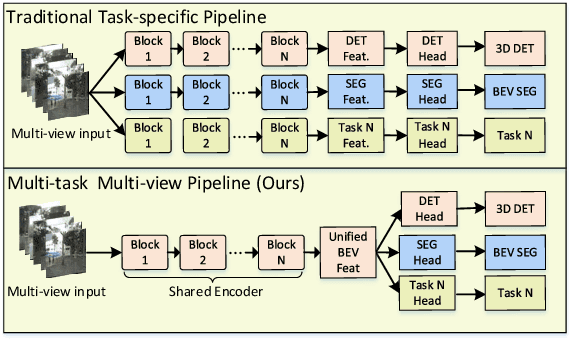
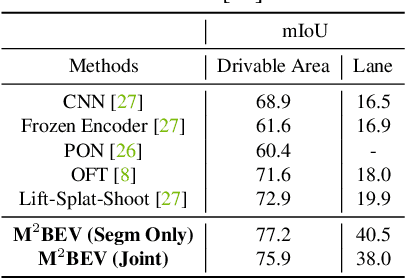
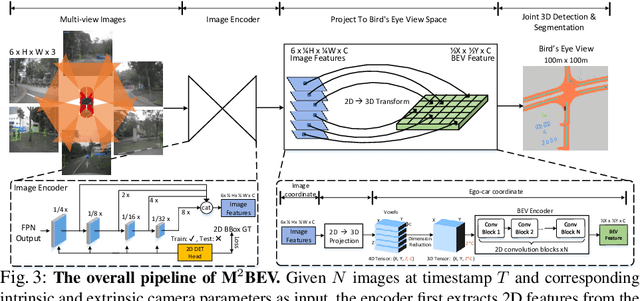
Abstract:In this paper, we propose M$^2$BEV, a unified framework that jointly performs 3D object detection and map segmentation in the Birds Eye View~(BEV) space with multi-camera image inputs. Unlike the majority of previous works which separately process detection and segmentation, M$^2$BEV infers both tasks with a unified model and improves efficiency. M$^2$BEV efficiently transforms multi-view 2D image features into the 3D BEV feature in ego-car coordinates. Such BEV representation is important as it enables different tasks to share a single encoder. Our framework further contains four important designs that benefit both accuracy and efficiency: (1) An efficient BEV encoder design that reduces the spatial dimension of a voxel feature map. (2) A dynamic box assignment strategy that uses learning-to-match to assign ground-truth 3D boxes with anchors. (3) A BEV centerness re-weighting that reinforces with larger weights for more distant predictions, and (4) Large-scale 2D detection pre-training and auxiliary supervision. We show that these designs significantly benefit the ill-posed camera-based 3D perception tasks where depth information is missing. M$^2$BEV is memory efficient, allowing significantly higher resolution images as input, with faster inference speed. Experiments on nuScenes show that M$^2$BEV achieves state-of-the-art results in both 3D object detection and BEV segmentation, with the best single model achieving 42.5 mAP and 57.0 mIoU in these two tasks, respectively.
CoordGAN: Self-Supervised Dense Correspondences Emerge from GANs
Mar 30, 2022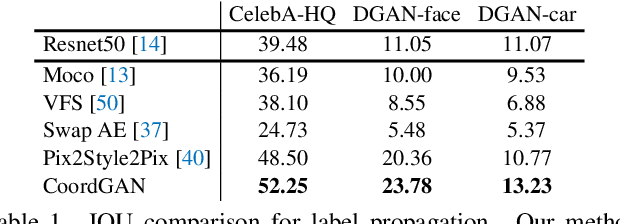
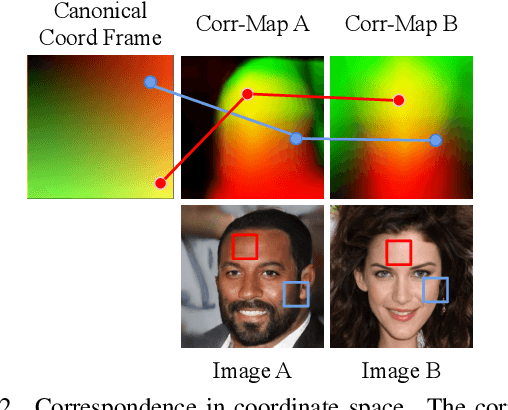

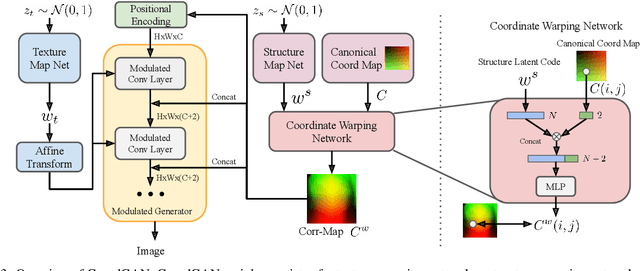
Abstract:Recent advances show that Generative Adversarial Networks (GANs) can synthesize images with smooth variations along semantically meaningful latent directions, such as pose, expression, layout, etc. While this indicates that GANs implicitly learn pixel-level correspondences across images, few studies explored how to extract them explicitly. In this work, we introduce Coordinate GAN (CoordGAN), a structure-texture disentangled GAN that learns a dense correspondence map for each generated image. We represent the correspondence maps of different images as warped coordinate frames transformed from a canonical coordinate frame, i.e., the correspondence map, which describes the structure (e.g., the shape of a face), is controlled via a transformation. Hence, finding correspondences boils down to locating the same coordinate in different correspondence maps. In CoordGAN, we sample a transformation to represent the structure of a synthesized instance, while an independent texture branch is responsible for rendering appearance details orthogonal to the structure. Our approach can also extract dense correspondence maps for real images by adding an encoder on top of the generator. We quantitatively demonstrate the quality of the learned dense correspondences through segmentation mask transfer on multiple datasets. We also show that the proposed generator achieves better structure and texture disentanglement compared to existing approaches. Project page: https://jitengmu.github.io/CoordGAN/
FreeSOLO: Learning to Segment Objects without Annotations
Feb 24, 2022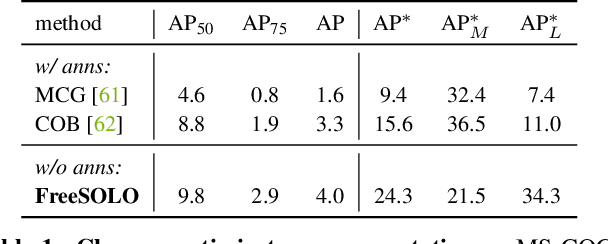

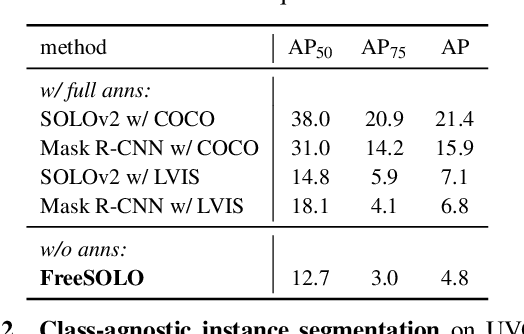
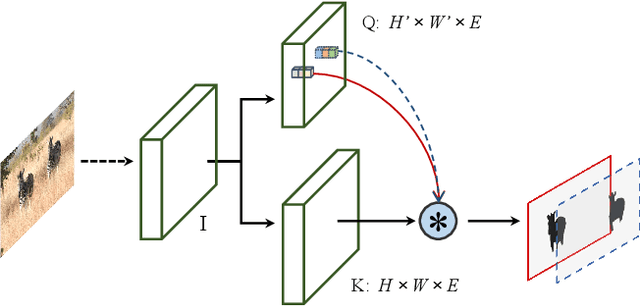
Abstract:Instance segmentation is a fundamental vision task that aims to recognize and segment each object in an image. However, it requires costly annotations such as bounding boxes and segmentation masks for learning. In this work, we propose a fully unsupervised learning method that learns class-agnostic instance segmentation without any annotations. We present FreeSOLO, a self-supervised instance segmentation framework built on top of the simple instance segmentation method SOLO. Our method also presents a novel localization-aware pre-training framework, where objects can be discovered from complicated scenes in an unsupervised manner. FreeSOLO achieves 9.8% AP_{50} on the challenging COCO dataset, which even outperforms several segmentation proposal methods that use manual annotations. For the first time, we demonstrate unsupervised class-agnostic instance segmentation successfully. FreeSOLO's box localization significantly outperforms state-of-the-art unsupervised object detection/discovery methods, with about 100% relative improvements in COCO AP. FreeSOLO further demonstrates superiority as a strong pre-training method, outperforming state-of-the-art self-supervised pre-training methods by +9.8% AP when fine-tuning instance segmentation with only 5% COCO masks.
Benchmarking Robustness of 3D Point Cloud Recognition Against Common Corruptions
Jan 28, 2022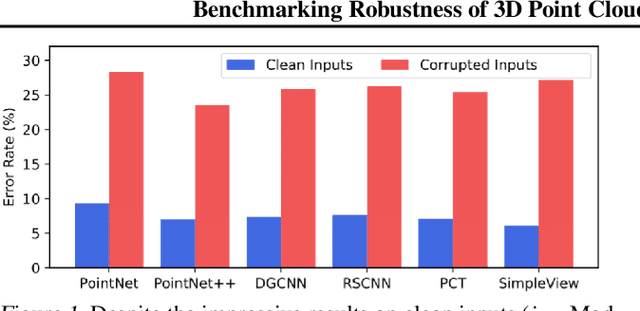

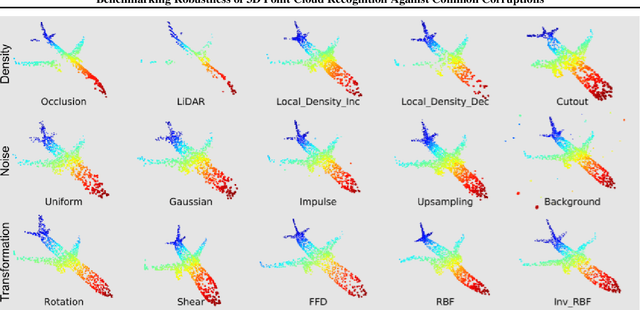

Abstract:Deep neural networks on 3D point cloud data have been widely used in the real world, especially in safety-critical applications. However, their robustness against corruptions is less studied. In this paper, we present ModelNet40-C, the first comprehensive benchmark on 3D point cloud corruption robustness, consisting of 15 common and realistic corruptions. Our evaluation shows a significant gap between the performances on ModelNet40 and ModelNet40-C for state-of-the-art (SOTA) models. To reduce the gap, we propose a simple but effective method by combining PointCutMix-R and TENT after evaluating a wide range of augmentation and test-time adaptation strategies. We identify a number of critical insights for future studies on corruption robustness in point cloud recognition. For instance, we unveil that Transformer-based architectures with proper training recipes achieve the strongest robustness. We hope our in-depth analysis will motivate the development of robust training strategies or architecture designs in the 3D point cloud domain. Our codebase and dataset are included in https://github.com/jiachens/ModelNet40-C
AugMax: Adversarial Composition of Random Augmentations for Robust Training
Oct 26, 2021
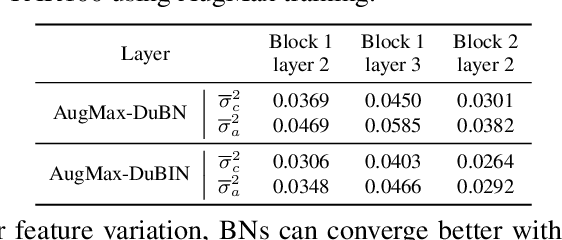

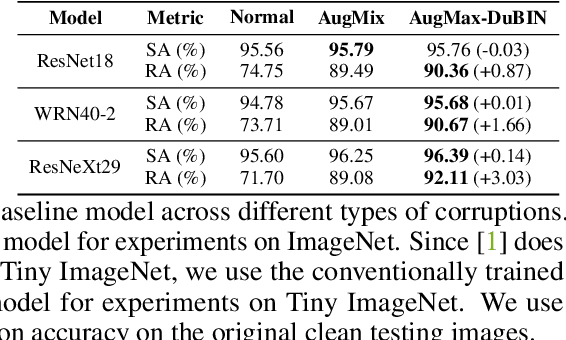
Abstract:Data augmentation is a simple yet effective way to improve the robustness of deep neural networks (DNNs). Diversity and hardness are two complementary dimensions of data augmentation to achieve robustness. For example, AugMix explores random compositions of a diverse set of augmentations to enhance broader coverage, while adversarial training generates adversarially hard samples to spot the weakness. Motivated by this, we propose a data augmentation framework, termed AugMax, to unify the two aspects of diversity and hardness. AugMax first randomly samples multiple augmentation operators and then learns an adversarial mixture of the selected operators. Being a stronger form of data augmentation, AugMax leads to a significantly augmented input distribution which makes model training more challenging. To solve this problem, we further design a disentangled normalization module, termed DuBIN (Dual-Batch-and-Instance Normalization), that disentangles the instance-wise feature heterogeneity arising from AugMax. Experiments show that AugMax-DuBIN leads to significantly improved out-of-distribution robustness, outperforming prior arts by 3.03%, 3.49%, 1.82% and 0.71% on CIFAR10-C, CIFAR100-C, Tiny ImageNet-C and ImageNet-C. Codes and pretrained models are available: https://github.com/VITA-Group/AugMax.
Learning Contrastive Representation for Semantic Correspondence
Sep 22, 2021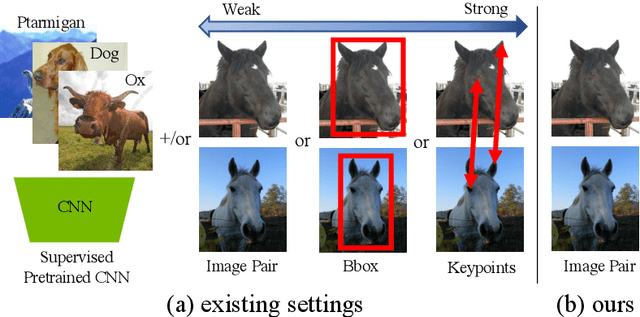
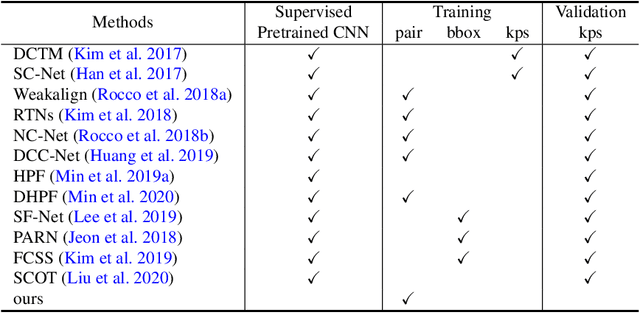


Abstract:Dense correspondence across semantically related images has been extensively studied, but still faces two challenges: 1) large variations in appearance, scale and pose exist even for objects from the same category, and 2) labeling pixel-level dense correspondences is labor intensive and infeasible to scale. Most existing approaches focus on designing various matching approaches with fully-supervised ImageNet pretrained networks. On the other hand, while a variety of self-supervised approaches are proposed to explicitly measure image-level similarities, correspondence matching the pixel level remains under-explored. In this work, we propose a multi-level contrastive learning approach for semantic matching, which does not rely on any ImageNet pretrained model. We show that image-level contrastive learning is a key component to encourage the convolutional features to find correspondence between similar objects, while the performance can be further enhanced by regularizing cross-instance cycle-consistency at intermediate feature levels. Experimental results on the PF-PASCAL, PF-WILLOW, and SPair-71k benchmark datasets demonstrate that our method performs favorably against the state-of-the-art approaches. The source code and trained models will be made available to the public.
Panoptic SegFormer
Sep 11, 2021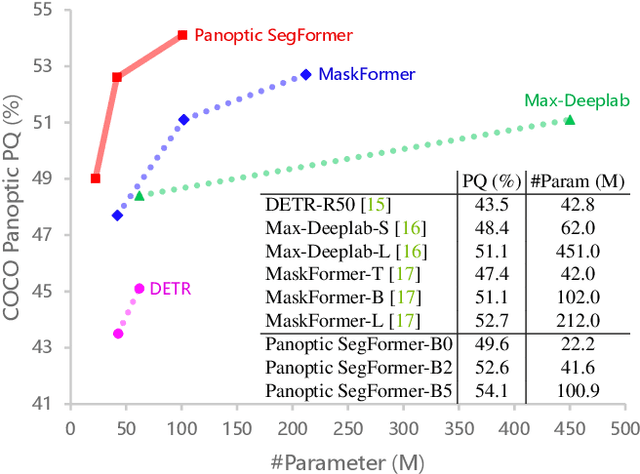
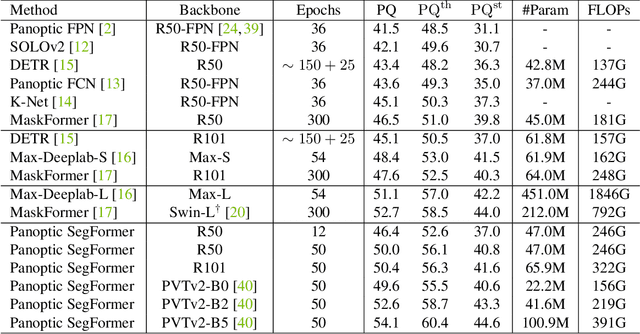

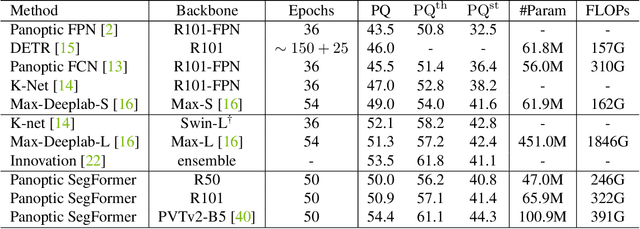
Abstract:We present Panoptic SegFormer, a general framework for end-to-end panoptic segmentation with Transformers. The proposed method extends Deformable DETR with a unified mask prediction workflow for both things and stuff, making the panoptic segmentation pipeline concise and effective. With a ResNet-50 backbone, our method achieves 50.0\% PQ on the COCO test-dev split, surpassing previous state-of-the-art methods by significant margins without bells and whistles. Using a more powerful PVTv2-B5 backbone, Panoptic-SegFormer achieves a new record of 54.1\%PQ and 54.4\% PQ on the COCO val and test-dev splits with single scale input.
Towards Reducing Labeling Cost in Deep Object Detection
Jun 22, 2021

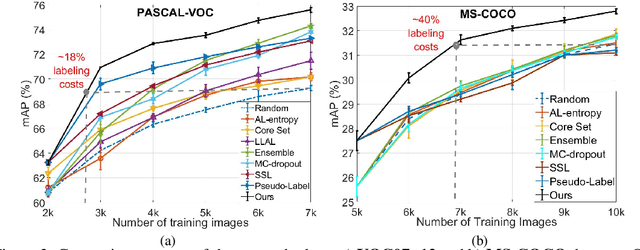

Abstract:Deep neural networks have reached very high accuracy on object detection but their success hinges on large amounts of labeled data. To reduce the dependency on labels, various active-learning strategies have been proposed, typically based on the confidence of the detector. However, these methods are biased towards best-performing classes and can lead to acquired datasets that are not good representatives of the data in the testing set. In this work, we propose a unified framework for active learning, that considers both the uncertainty and the robustness of the detector, ensuring that the network performs accurately in all classes. Furthermore, our method is able to pseudo-label the very confident predictions, suppressing a potential distribution drift while further boosting the performance of the model. Experiments show that our method comprehensively outperforms a wide range of active-learning methods on PASCAL VOC07+12 and MS-COCO, having up to a 7.7% relative improvement, or up to 82% reduction in labeling cost.
SECANT: Self-Expert Cloning for Zero-Shot Generalization of Visual Policies
Jun 17, 2021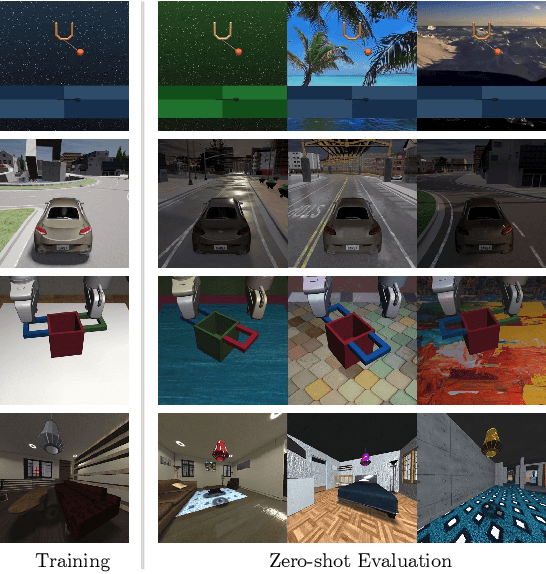
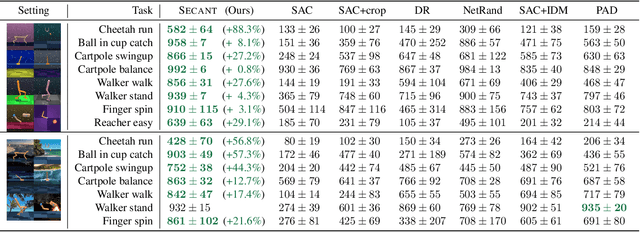
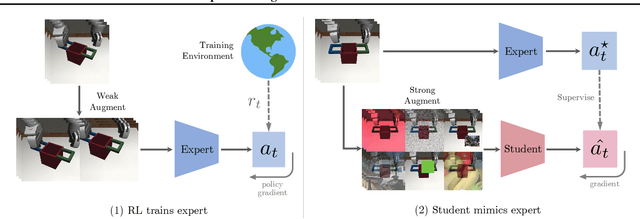

Abstract:Generalization has been a long-standing challenge for reinforcement learning (RL). Visual RL, in particular, can be easily distracted by irrelevant factors in high-dimensional observation space. In this work, we consider robust policy learning which targets zero-shot generalization to unseen visual environments with large distributional shift. We propose SECANT, a novel self-expert cloning technique that leverages image augmentation in two stages to decouple robust representation learning from policy optimization. Specifically, an expert policy is first trained by RL from scratch with weak augmentations. A student network then learns to mimic the expert policy by supervised learning with strong augmentations, making its representation more robust against visual variations compared to the expert. Extensive experiments demonstrate that SECANT significantly advances the state of the art in zero-shot generalization across 4 challenging domains. Our average reward improvements over prior SOTAs are: DeepMind Control (+26.5%), robotic manipulation (+337.8%), vision-based autonomous driving (+47.7%), and indoor object navigation (+15.8%). Code release and video are available at https://linxifan.github.io/secant-site/.
Practical Machine Learning Safety: A Survey and Primer
Jun 09, 2021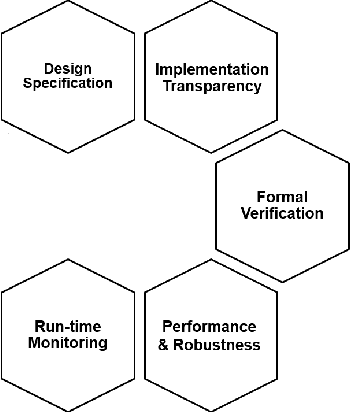
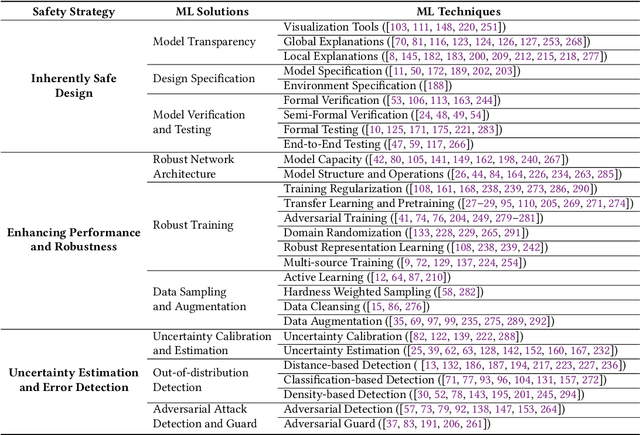
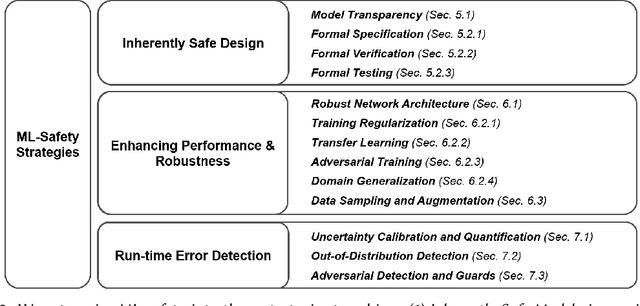
Abstract:The open-world deployment of Machine Learning (ML) algorithms in safety-critical applications such as autonomous vehicles needs to address a variety of ML vulnerabilities such as interpretability, verifiability, and performance limitations. Research explores different approaches to improve ML dependability by proposing new models and training techniques to reduce generalization error, achieve domain adaptation, and detect outlier examples and adversarial attacks. In this paper, we review and organize practical ML techniques that can improve the safety and dependability of ML algorithms and therefore ML-based software. Our organization maps state-of-the-art ML techniques to safety strategies in order to enhance the dependability of the ML algorithm from different aspects, and discuss research gaps as well as promising solutions.
 Add to Chrome
Add to Chrome Add to Firefox
Add to Firefox Add to Edge
Add to Edge